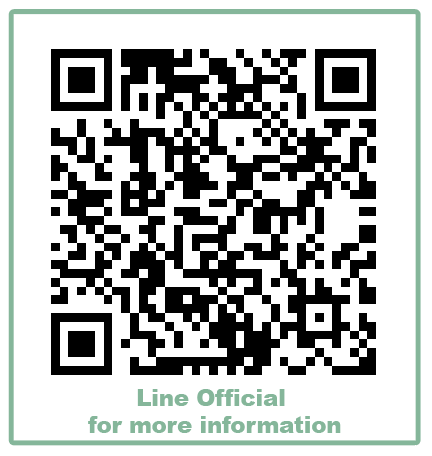Art Activities in Anatomical Learning for Medical Students
DOI:
https://doi.org/10.14456/jescu.2025.7Keywords:
Art and Anatomy, Art Activity, Anatomy, Anatomical drawingAbstract
This research aims to: 1) analyze and synthesize the methods and results of using art activities in learning anatomy for medical students, and 2) develop an art activity model to support anatomy learning. The research utilizes a systematic literature review method to study previous research articles that cover art activities in anatomy learning for medical students. The articles reviewed were sourced from databases in Thailand and internationally, focusing on research published within the past five years. A total of 11 articles that met the specified criteria were selected, and the results were analyzed. The study found that using art activities to support anatomy learning aims to increase motivation for learning. These activities help students review their knowledge for a deeper understanding of the content, develop observational skills, creativity, drawing skills, as well as communication and teamwork abilities during the activities. Based on these findings, the researcher developed an approach for organizing art activities to learn anatomy for medical students, called the KSC Model (K: Knowledge, S: Skills, C: Communication). This model uses art activities to review knowledge, practice drawing skills, and practice presenting to others. It enables learners to develop cognitive, psychomotor, and affective domains, fostering motivation, knowledge retention, and long-term memory.
References
ภาษาไทย
รวีโรจน์ ทองธานินท์ขวัญ, วทัญญู อินเทศน์, เอกณรงค์ ธรรมตา, เจษฎา บุญแก้ว, วิษณุ ใจวันดี, กาญจนา หาญศิริวัฒนกิจ, เพ็ญประภา ศิวิโรจน์, และ ไพวรรณ สุดวรรค์. (2561). ปัจจัยที่มีความสัมพันธ์กับความรู้ความจำเรื่องมหกายวิภาคศาสตร์ของมนุษย์ในนักศึกษาแพทย์. จุฬาลงกรณ์เวชสาร, 62(3), 593-605. https://doi.org/10.58837/CHULA.CMJ.62.3.14
วรสิทธิ์ เจริญศิลป์, ชัยกิจ อุดแน่น, ศุภชัย นาทองไชย, ธนวรรณ แก้วคง, นาฏยา แก้วมา, และ จินดาหรา บุญมี. (2562). สถานภาพความรู้ด้านแพทยศาสตรศึกษาในประเทศไทย: การศึกษาโดยใช้งานวิจัยเป็นฐาน. ศรีนครินทร์เวชสาร, 34(1), 68-74. https://li01.tci-thaijo.org/index.php/SRIMEDJ/article/view/173314
สรณรัชฎ์ กาญจนะวณิชย์, สุทัศน์ ยกส้าน และ บัญชา ธนบุญสมบัติ. (2550). ถอดรหัสอัจฉริยะ เลโอนาโด ดาวินชี. สารคดี.
สิรินิตย์ พรรณหาญ, บุญมี พันธุ์ไทย, และ กมลทิพย์ ศรีหาเศษ. (2561). ปัจจัยที่มีผลต่อความเครียดในการเรียนของนักศึกษาแพทย์ชั้นปีที่ 4-6 คณะแพทยศาสตร์โรงพยาบาลรามาธิบดี มหาวิทยาลัยมหิดล. Veridian E-Journal, Silpakorn University, 11(3), 2579-2593. https://he02.tci-thaijo.org/index.php/Veridian-E-Journal/article/view/161269
อัจฉรา คำมะทิตย์ และ มัลลิกา มากรัตน์. (2559). การทบทวนวรรณกรรมอย่างเป็นระบบ: วิธีปฏิบัติทีละขั้นตอน. วารสารเครือข่ายวิทยาลัยพยาบาลและการสาธารณสุขภาคใต้, 3(3), 246-259. https://he01.tci-thaijo.org/index.php/scnet/article/view/68742
อภินภัศ จิตรกร. (2559). การจัดการเรียนรู้แบบศิลปะเป็นฐานเพื่อส่งเริมความคิดสร้างสรรค์ของผู้เรียนในศตวรรษที่ 21. วารสารศึกษาศาสตร์ มหาวิทยาลัยศิลปากร, 14(1), 60-72. https://so02.tci-thaijo.org/index.php/suedujournal/article/view/92249
ภาษาอังกฤษ
Amin, A. (2020). ‘Drawing’ to learn anatomy: Exploring the theoretical underpinning and conditions favouring drawing based learning. The Journal of the Pakistan Medical Association, 70(11), 2017-2022. https://pubmed.ncbi.nlm.nih.gov/33341850/
Carrasco-Molinillo, C., Ribelles-Garcia, A., Almorza-Gomar, D., Pérez-Arana, G. & Prada-Oliveira, J. A. (2019). The teaching of surface anatomy by body painting. International Journal of Morphology, 37(3), 912-916. http://doi.org/10.4067/S0717-95022019000300912
Diaz, C. M. (2022). Beyond the classroom: Inspiring medical and health science students to learn surface anatomy. Medical Science Educator, 32, 361-370. https://doi.org/10.1007/s40670-022-01521-0
Diaz, C. M., & Woolley, T. (2021). “Learning by doing”: A mixed-methods study to identify why body painting can be a powerful approach for teaching surface anatomy to health science students. Medical Science Educator, 31, 1875-1887. https://doi.org/10.1007/s40670-021-01376-x
Fleming, N. D. & Mills, C. (1992). Not another inventory, rather a catalyst for reflection. To Improve the Academy, 11(1), 137-144. https://doi.org/10.1002/j.2334-4822.1992.tb00213.x
Gilbert, M., Picketts, L., MacLeod, A., & Steward, W. A. (2022). How an arts-based clinical skills set can be assessed during OSCEs. AMA Journal of Ethics, 22(7), 556-562. https://doi.org/10.1001/amajethics.2022.556
Greene, S. J. (2019). The use and effectiveness of interactive progressive drawing in anatomy education. Anatomy Science Education, 11(5), 445-460. https://doi.org/10.1002/ase.1784
Hajar, R. (2011). Medical illustration: Art in medical education. Heart Views, 12(2), 83-91. https://doi.org/10.4103/1995-705X.86023
He, B., Prasad, S., Higashi, R. T., & Goff, H. W. (2019). The art of observation: A qualitative analysis of medical students’ experiences. BMC Medical Education, 19(234), 1-6. https://doi.org/10.1186/s12909-019-1671-2
Hernandez, J. E., Vasan, N., Huff, S., & Melovitz-Vasan, C. (2020). Learning styles/preferences among medical students: Kinesthetic learner’s multimodal approach to learning anatomy. Medical Science Educator, 30, 1633-1638. https://doi.org/10.1007/s40670-020-01049-1
Hodges, E. R. S., Buchanan, S., & Nicholson, T. (2003). The Guild Handbook of Scientific Illustration (2nd ed.). Van Nostrand Reinhold.
Iorio, S., Cilione, M., Martini, M., Tofani, M., & Gazzaniga, V. (2022). Soft skills are hard skills— a historical perspective. Medicina, 58(8), 1044. https://doi.org/10.3390/medicina58081044
Masters, K. (2013). Edgar Dale’s pyramid of learning in medical education: A literature review. Medical Teacher, 35(11), e1584-e1593. https://doi.org/10.3109/0142159X.2013.800636
Mitrousias, V., Baxevanidou, K., & Zibis, A. (2020). Art & anatomy: An everlasting relationship creating new insights in teaching surface anatomy. MedEdPublish, 9(23), 1-19. https://doi.org/10.15694/mep.2020.000023.1
Reid, S., Shapiro, L., & Louw, G. (2019). How haptics and drawing enhance the learning of anatomy. Anatomical Sciences Education, 12(2), 164-172. https://doi.org/10.1002/ase.1807
Shapiro, L., Hobbs, E., & Keenan, I. D. (2023). Transforming musculoskeletal anatomy learning with haptic surface painting. Anatomical Sciences Education, 16(4), 677-693. https://doi.org/10.1002/ase.2262
Singal, A., Sahni, D., Chaudhary, P., & Singh, H. (2021). Virtual thanks giving to a cadaver by medical students exposed to learning anatomy before and amidst covid-19 pandemic. Surgical and Radiologic Anatomy, 43, 523–527. https://doi.org/10.1007/s00276-021-02715-8
Sontakke, Y. A., & Akhil, J. (2022). Changing art of anatomy illustrations. Scholars International Journal of Anatomy and Physiology, 5(3), 55-58. https://doi.org/10.36348/sijap.2022.v05i03.001
Zumwalt, A. C. (2020). Anticipatory feelings about dissection: An exercise for the first day of a gross anatomy course. Anatomical Sciences Education, 14(6), 828-835. https://doi.org/10.1002/ase.2048
Downloads
Published
How to Cite
Issue
Section
License

This work is licensed under a Creative Commons Attribution-NonCommercial-NoDerivatives 4.0 International License.




